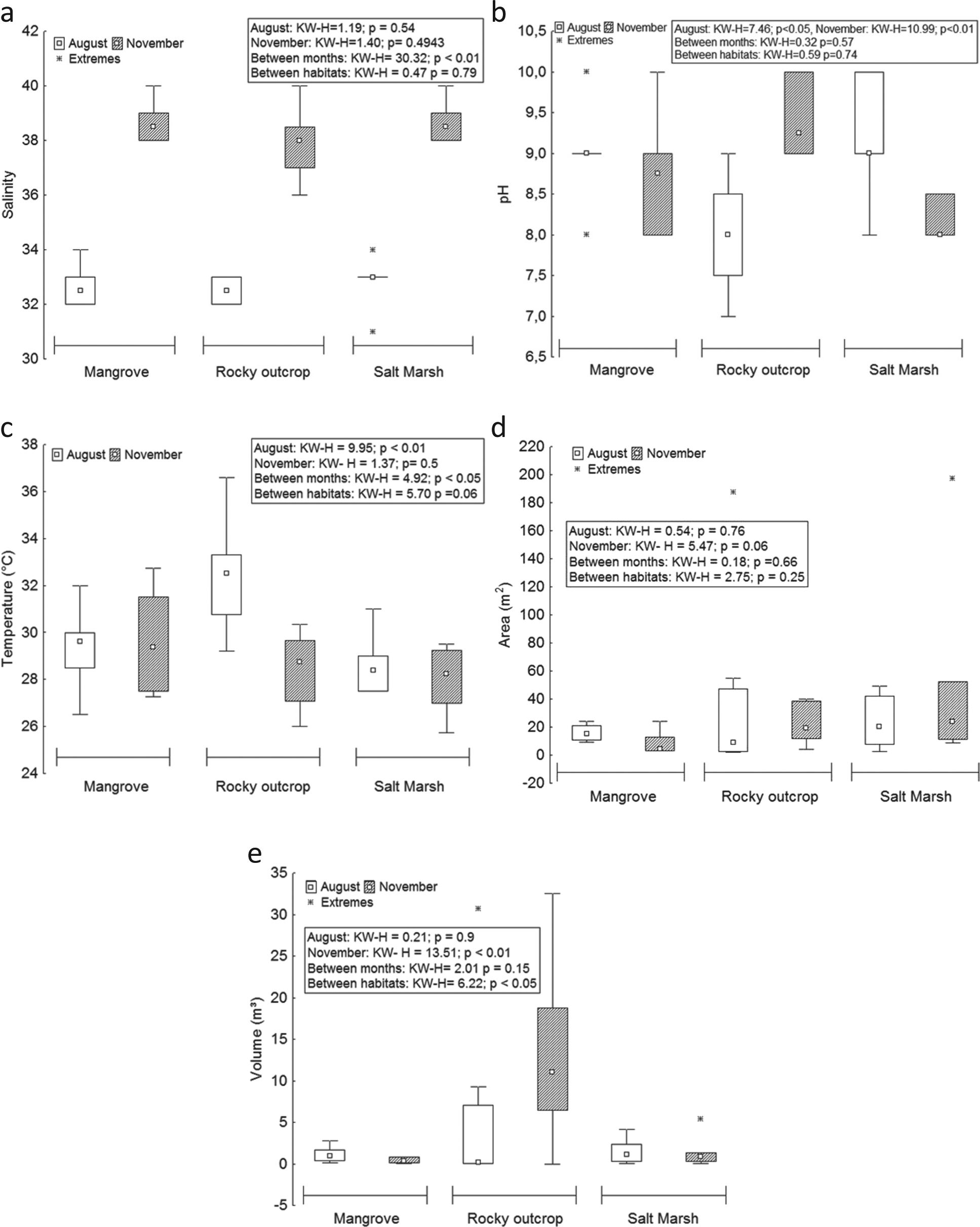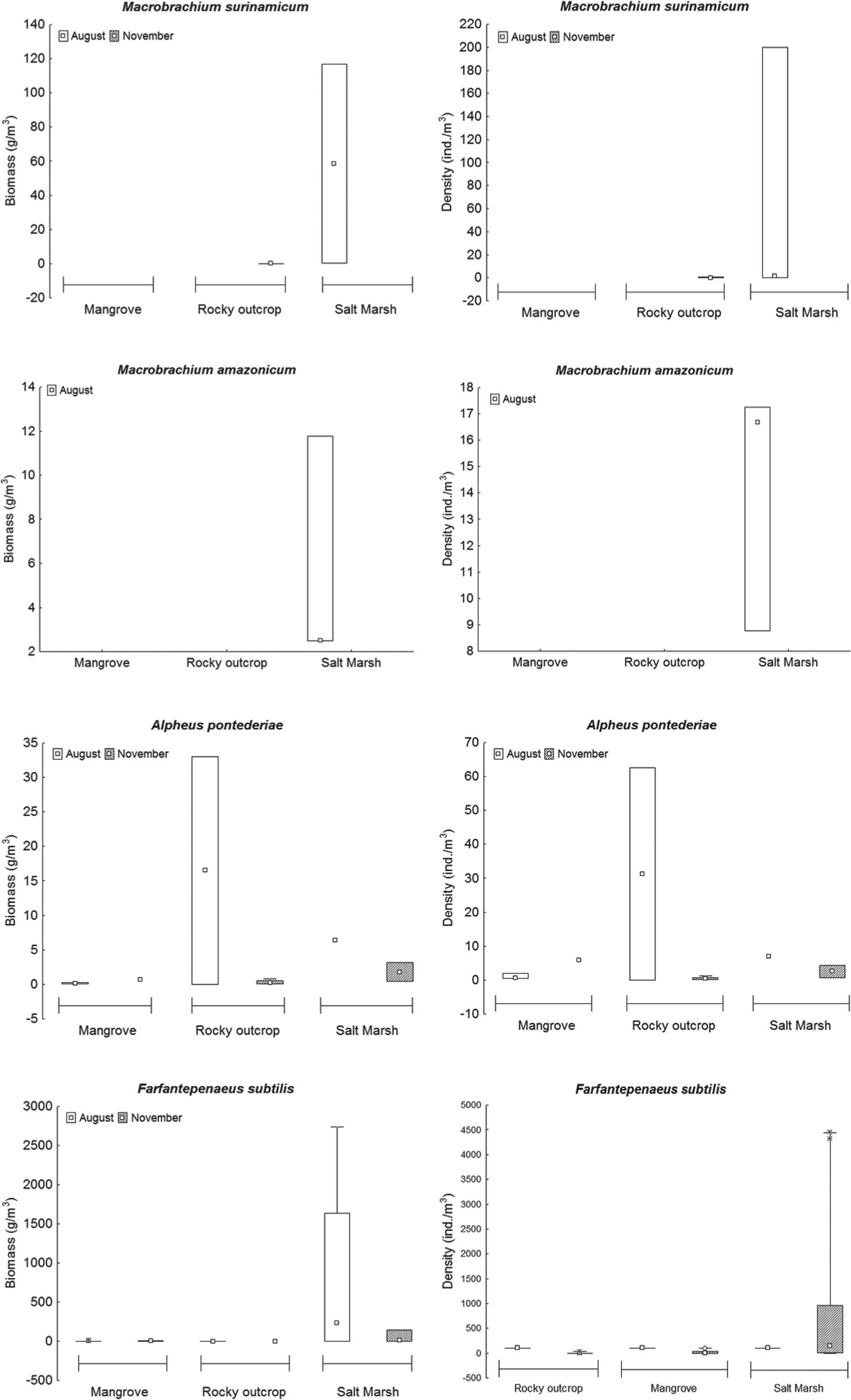The present work investigated the occupation and the correlation of the shrimp abundance in relation to environmental variables in different habitats (mangroves, salt marshes and rocky outcrops) in an Amazon estuary. The collections were made in August and November 2009, at low syzygy tide on Areuá Beach, situated in the Extractive Reserve of Mãe Grande de Curuçá, Pará, Brazil totaling 20 pools. In each environment, we recorded the physical-chemical factors (pH, salinity, and temperature) and measured the area (m2) and volume (m3) of every pool through bathymetry. The average pH, salinity, temperature, area and volume of tide pools were 8.75 (± 0.8 standard deviation), 35.45 (± 3), 29.49 °C (± 2.32), 27.41 m2 (± 41.18), and 5.19 m3(± 8.01), respectively. We caught a total of 4,871 shrimps, distributed in three families and four species: Farfantepenaeus subtilis (98.36%) (marine) followed byAlpheus pontederiae (0.76%) (estuarine), Macrobrachium surinamicum(0.45%) and Macrobrachium amazonicum(0.43%) predominantly freshwater. The species F. subtilis and A. pontederiae occurred in the three habitats, whereas M. surinamicum occurred in salt marsh and rocky outcrop and M. amazonicum only in marisma. Temperature and pH were the most important environmental descriptors that significantly affected the density and biomass of shrimps.
habitat; density; biomass; Decapoda






